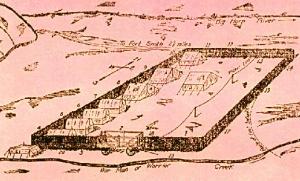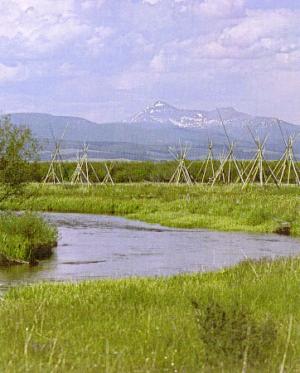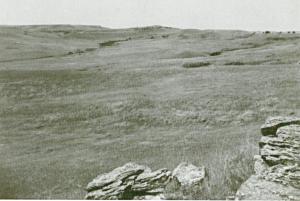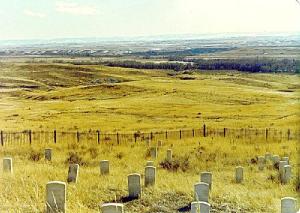Hayfield Fight, Montana

Fought on August 1, 1867, three miles from Fort C. F. Smith, Montana, Territory, the battle pitted a determined stand of 31 soldiers and civilians against more than 700 Sioux and Cheyenne warriors.
Fortified behind a barrier of a low log corral, the combined soldier/civilian force withstood six hours of attacks before relief finally arrived to disperse the warriors. Known as the Hayfield Fight, the site is located about three miles from Fort C. F. Smith, Montana.
The site is on private land, marked by a monument and plaque.
Big Hole Battlefield, Montana

The Battle of Big Hole is one of a series of engagements between U.S. troops and the fleeing Nez Perce under Chief Joseph and other leaders.
Col. John Gibbon attacked the sleeping Nez Perce camp at dawn on August 9, 1877. He inflicted severe casualties before a vigorous counterattack drove him back and allowed the Nez Perce to escape.
Casualties: U.S. 29 killed, 40 wounded; Indians 89 killed. The National Park Service operates this site.
Rosebud Battlefield State Park, Montana

On the morning of June 17, 1876, Brig. Gen. George Crook, his 1,050 soldiers and 260 Crow and Shoshone scouts were attacked by a nearly equal combined Sioux and Cheyenne force along Rosebud Creek, Montana Territory.
Crook’s column represented one of three military prongs placed in the field in the summer to seek out and force the Sioux to accept reservation confinement. Under the leadership of Crazy Horse, the warriors fought.
Crook’s men to a standstill. Crook suffered 10 killed and 21 wounded in the six-hour fight. The warriors suffered similar casualties. Crook returned to his supply base near present-day Sheridan, Wyoming. Eight days later, these same warriors defeated Lt. Col. George A. Custer’s column at the Battle of the Little Bighorn. The site is operated by Montana State Parks
Little Bighorn Battlefield National Monument, Montana

Here on June 25, 1876, a large force made up mostly of Sioux and Southern Cheyenne warriors under Sitting Bull, Gall, and Crazy Horse overwhelmed Lt. Col. George A. Custer’s 7th Cavalry in one of the most complete defeats in American military history.
Custer and approximately 210 men were slain in the famous "Custer’s Last Stand." Four miles away, up the Little Bighorn, along the bluffs overlooking the river, Maj. Marcus A. Reno and the rest of the regiment remained for two days until help arrived. Reno lost about 70 soldiers and Crow guides.
The Indian victory was of short duration. By the spring of 1877, most of the Sioux and Cheyenne, including Crazy Horse, facing starvation and constant military pressure, finally surrendered and accepted reservation confinement. The National Park Service operates the site.
This website uses cookies that are necessary to its functioning and required to achieve the purposes illustrated in the privacy policy. By accepting this OR scrolling this page OR continuing to browse, you agree to our Privacy Policy